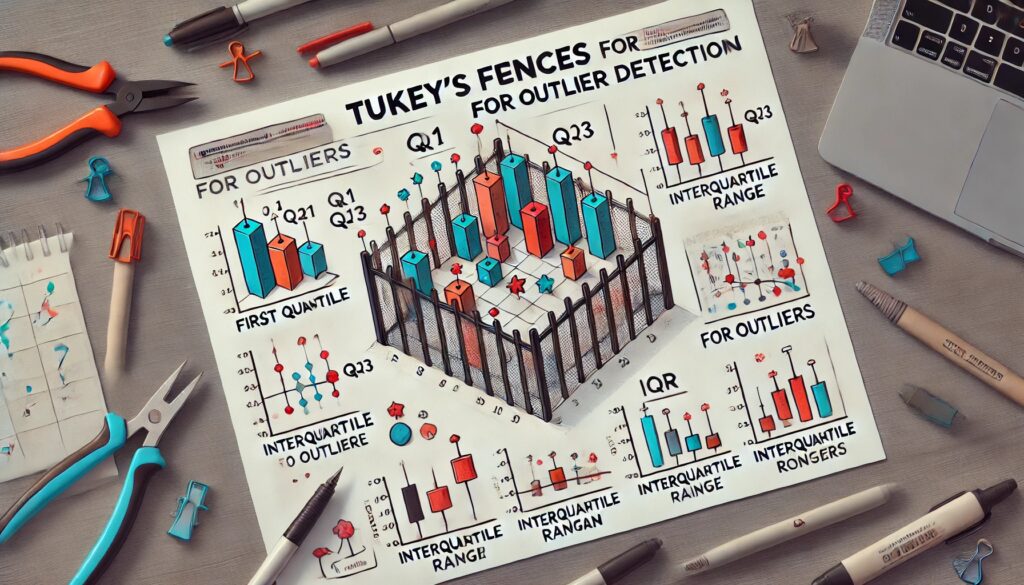
Unveiling STL: Mastering Seasonal Decomposition for Anomaly Detection
Seasonal Decomposition of Time Series using LOESS (STL) is a robust method that breaks down a time series into three components: seasonal, trend, and residual. This technique is invaluable for understanding patterns in seasonal data, such as retail sales or weather patterns, making it a critical tool for anomaly detection.
What is STL?
STL, or Seasonal-Trend decomposition using LOESS, utilizes locally estimated scatterplot smoothing (LOESS) to separate a time series into its fundamental components. The seasonal component captures repeating patterns, the trend component shows long-term progression, and the residual component reveals irregularities or noise.
Applications of STL
STL shines in various applications, from monitoring retail sales to analyzing climate data. For example, in retail, STL can pinpoint seasonal peaks and uncover anomalies in monthly sales figures, helping businesses adjust strategies accordingly. Similarly, in weather forecasting, STL helps in distinguishing seasonal variations from climate trends.
Pros and Cons of STL
Pros:
- Handles seasonality effectively: STL can adapt to complex seasonal patterns, making it suitable for diverse datasets.
- Flexible and robust: It can be fine-tuned to different contexts, enhancing its applicability across various fields.
Cons:
- Computationally intensive: The method requires significant processing power, which can be a drawback for large datasets.
- Requires parameter tuning: Finding the optimal parameters for LOESS can be challenging and time-consuming.
Practical Example
Consider a company analyzing monthly retail sales data. By applying STL, they can break down the data to see seasonal trends (like holiday shopping spikes), overall sales trends, and irregular anomalies that might indicate unusual activity, such as a sudden drop due to unforeseen circumstances.

Detecting Outliers with Tukey’s Fences: A Simple Guide
Tukey’s Fences is a powerful, non-parametric method used in exploratory data analysis to identify outliers. This technique is based on the interquartile range (IQR), which measures statistical dispersion and is particularly useful in datasets where the underlying distribution is unknown.
What are Tukey’s Fences?
Tukey’s Fences involves calculating the first quartile (Q1) and the third quartile (Q3) of a dataset. The interquartile range (IQR) is the difference between Q3 and Q1. Outliers are identified as data points that fall below Q1 – 1.5 * IQR or above Q3 + 1.5 * IQR. This creates a “fence” around the central 50% of data.
Applications of Tukey’s Fences
Tukey’s Fences is widely used in exploratory data analysis (EDA) to detect anomalous data points. For instance, in a dataset of exam scores, it helps in spotting unusually high or low scores. It’s also applied in various fields like finance for detecting fraudulent transactions and in environmental science for identifying abnormal climate readings.
Pros and Cons of Tukey’s Fences
Pros:
- Non-parametric: This method does not assume any specific data distribution, making it flexible and broadly applicable.
- Easy to implement: Calculating quartiles and IQR is straightforward and requires minimal computational resources.
Cons:
- Not effective for small datasets: The method relies on having a sufficient number of data points to accurately calculate quartiles and IQR.
- Arbitrary choice of multiplier: The choice of 1.5 or 3 for the multiplier is somewhat arbitrary and might not suit all datasets. Different fields or datasets might require tuning of this parameter.
Practical Example
Imagine a dataset of 100 students’ exam scores. By applying Tukey’s Fences, we can identify those who scored significantly higher or lower than the rest, such as scores that fall outside the typical range. This helps educators understand performance trends and address any potential issues.
Conclusion
Tukey’s Fences provides a simple yet effective way to detect outliers in various datasets. Its non-parametric nature and ease of use make it a go-to method for initial data analysis, although its effectiveness may vary with the size of the dataset and the appropriateness of the chosen multiplier.
FAQ
How do Tukey’s Fences work? The method involves calculating the first quartile (Q1) and the third quartile (Q3) of a dataset. The IQR is the difference between Q3 and Q1. Outliers are defined as data points below Q1 – 1.5 * IQR or above Q3 + 1.5 * IQR.
What are the typical multiplier values used in Tukey’s Fences? The most common multipliers are 1.5 for identifying regular outliers and 3.0 for detecting far outliers.
Why is Tukey’s Fences popular in exploratory data analysis? Tukey’s Fences is simple to implement and effective in identifying outliers without making assumptions about the data’s distribution. This makes it particularly useful for initial data analysis.
Can Tukey’s Fences be used on small datasets? While it can be applied to small datasets, its effectiveness diminishes as the sample size decreases because quartile calculations become less reliable.
Challenges
Ineffectiveness for Small Datasets: One significant challenge of using Tukey’s Fences is its reduced accuracy in small datasets. With fewer data points, the calculated quartiles might not represent the true distribution, leading to incorrect outlier detection.
Arbitrary Choice of Multiplier: The choice of 1.5 or 3.0 as multipliers for the IQR is somewhat arbitrary and may not be suitable for all datasets. Different datasets may require different multipliers, and finding the appropriate one can be challenging.
False Positives and Negatives: Tukey’s Fences can sometimes flag data points as outliers that are actually legitimate observations, especially in datasets with naturally high variability. Conversely, it might miss outliers in datasets with low variability if the chosen multiplier is not optimal.
Not Suitable for All Data Distributions: Although Tukey’s Fences is non-parametric, it might not be the best choice for datasets with certain characteristics, such as heavy-tailed distributions or multimodal distributions. In such cases, other outlier detection methods might be more appropriate.
Misinterpretation of Outliers: Outliers identified by Tukey’s Fences need careful interpretation. Not all outliers are errors or anomalies; some might be significant data points that provide valuable insights. Automatic removal of these outliers without proper analysis can lead to loss of important information.
For further reading, consider these resources:







